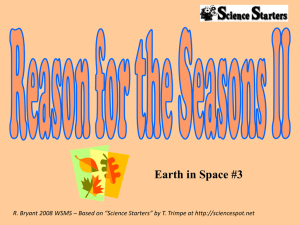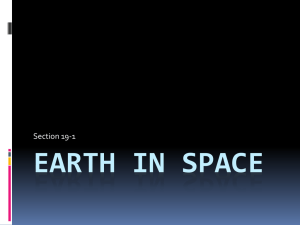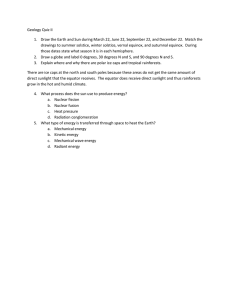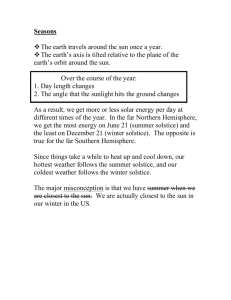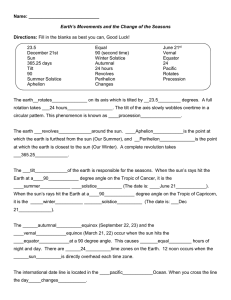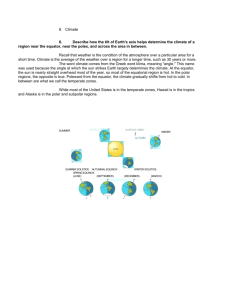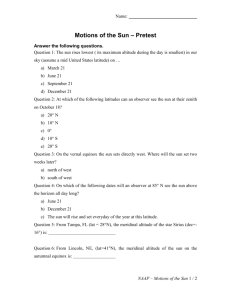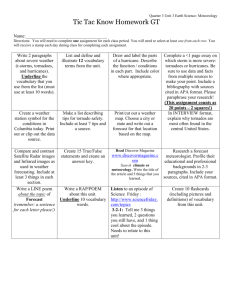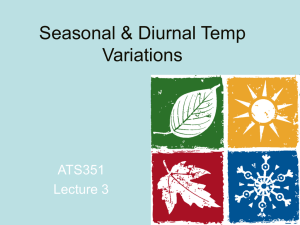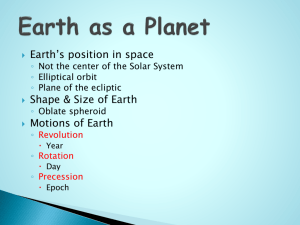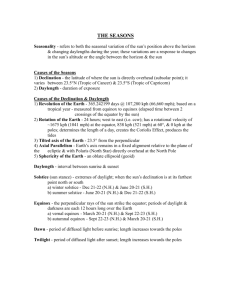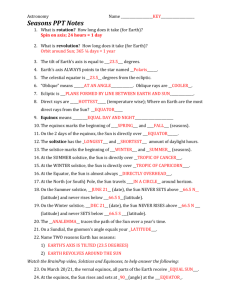lesson plan
advertisement
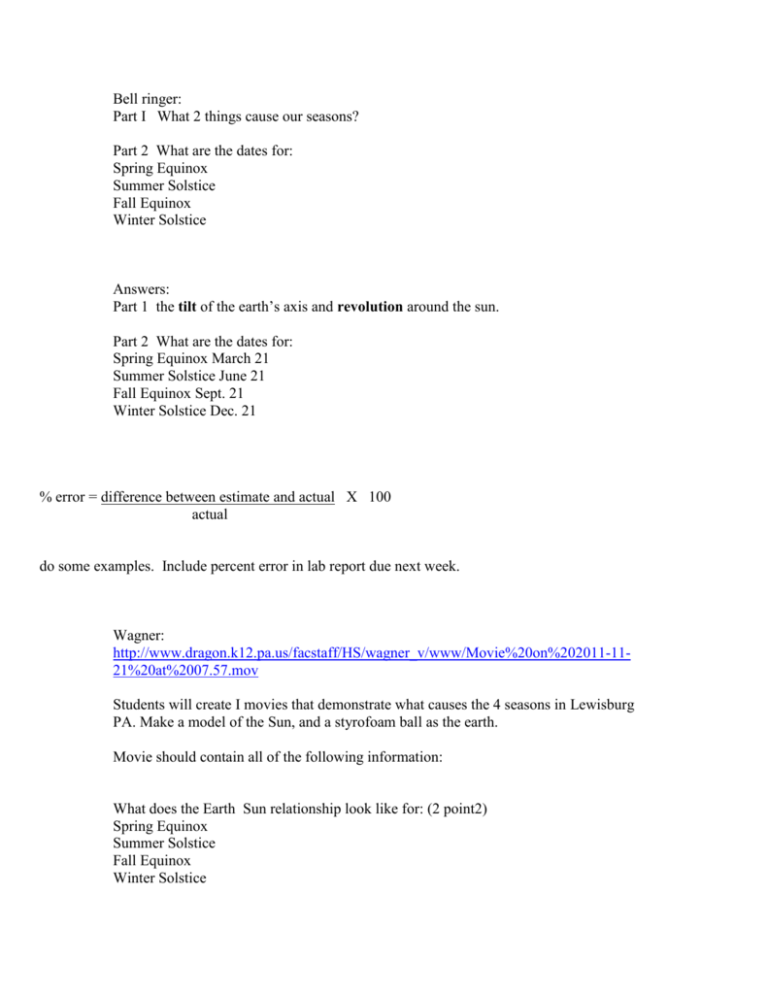
Bell ringer: Part I What 2 things cause our seasons? Part 2 What are the dates for: Spring Equinox Summer Solstice Fall Equinox Winter Solstice Answers: Part 1 the tilt of the earth’s axis and revolution around the sun. Part 2 What are the dates for: Spring Equinox March 21 Summer Solstice June 21 Fall Equinox Sept. 21 Winter Solstice Dec. 21 % error = difference between estimate and actual X 100 actual do some examples. Include percent error in lab report due next week. Wagner: http://www.dragon.k12.pa.us/facstaff/HS/wagner_v/www/Movie%20on%202011-1121%20at%2007.57.mov Students will create I movies that demonstrate what causes the 4 seasons in Lewisburg PA. Make a model of the Sun, and a styrofoam ball as the earth. Movie should contain all of the following information: What does the Earth Sun relationship look like for: (2 point2) Spring Equinox Summer Solstice Fall Equinox Winter Solstice Movie should show earth’s tilted axis as we orbit the sun. (1 point) Bell Ringer 2- When air heats up does it; expand, contract, or stay the same? Expand Demo Coriolis effect with balloon and student assistant. Discuss page 71 1. In your notebook, draw a large circle (softball size) to represent the Earth. (Refer to page 71) Label the Equator (0 degrees latitude), label both 30 degrees, both 60 degrees, and both 90 degrees. Draw and label the: Polar Easterlies Westerlies Northeast Trade Winds Southeast trade winds Westerlies Polar Easterlies Historic Winds / immigration Exit Bellringer: The Coriolis effect is due to: a) variations in the amount of solar radiation reaching different locations. b) seasonal changes in the levels of solar radiation at a given location. c) The density of the oceans. d) the Earth's orbit. e) the Earth's rotation. Answer: E Earth's rotation.
